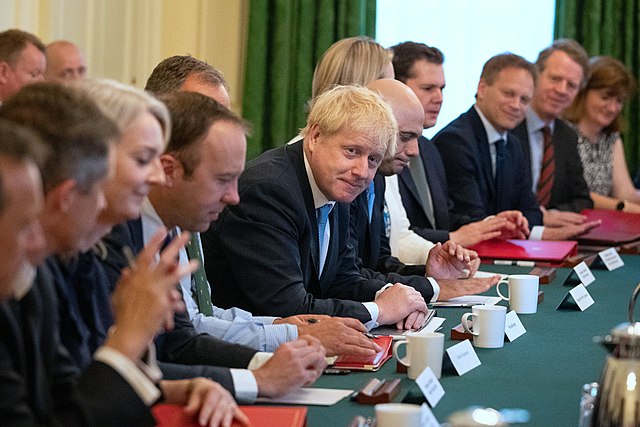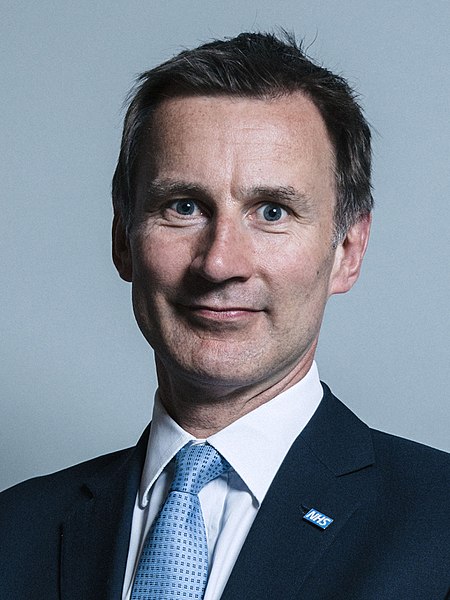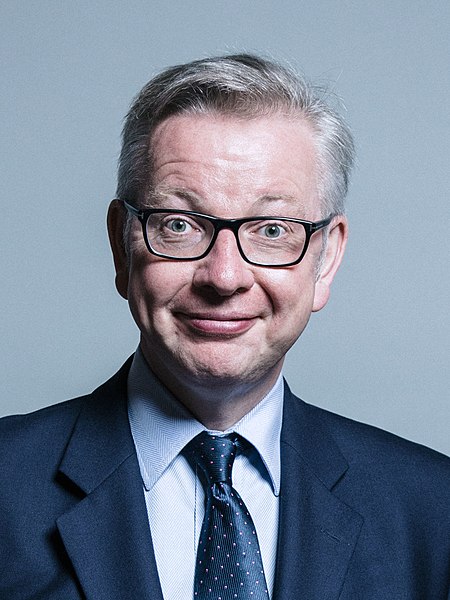The first Johnson ministry began on 24 July 2019 when Queen Elizabeth II invited Boris Johnson to form a new administration, following the resignation of the predecessor Prime Minister Theresa May. May had resigned as Leader of the Conservative Party on 7 June 2019; Johnson was elected as her successor on 23 July 2019. The Johnson ministry was formed from the 57th Parliament of the United Kingdom, as a Conservative minority government. It lost its working majority on 3 September 2019 when Tory MP Phillip Lee crossed the floor to the Liberal Democrats. An election was called for 12 December 2019, which led to the formation of a Conservative majority government, the second Johnson ministry.
Johnson holding his first cabinet meeting
Image: Boris Johnson official portrait (cropped)
Image: Official portrait of Sajid Javid MP
Image: Rt Hon Dominic Raab MP
2019 Conservative Party leadership election
The 2019 Conservative Party leadership election was triggered when Theresa May announced on 24 May 2019 that she would resign as leader of the Conservative Party on 7 June and as Prime Minister of the United Kingdom once a successor had been elected. Nominations opened on 10 June; 10 candidates were nominated. The first ballot of members of Parliament (MPs) took place on 13 June, with exhaustive ballots of MPs also taking place on 18, 19 and 20 June, reducing the candidates to two. The general membership of the party elected the leader by postal ballot; the result was announced on 23 July, with Boris Johnson being elected with almost twice as many votes as his opponent Jeremy Hunt.
Image: Boris Johnson election infobox
Image: Official portrait of Mr Jeremy Hunt crop 2
May announces her pending resignation outside 10 Downing Street on 24 May 2019; she left office on 24 July
Image: Official portrait of Michael Gove crop 2








